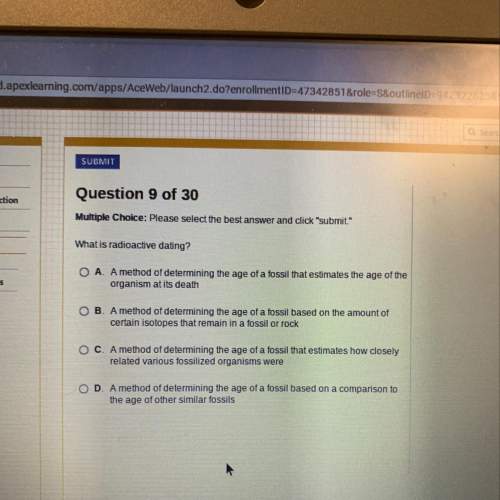
Biology, 14.04.2020 19:03 swkgp3cevk
A researcher has a laboratory strain of flies that have loss-of-function mutations in both gene X and white. These flies are used as hosts for P element transformation: Embryos of the double mutant strain are injected with two plasmids, one containing a wild-type copy of the white gene (w ) and a wild-type copy of gene X, side-by-side within P element inverted repeats, and the other plasmid containing only the P element transposase gene. Transgenic offspring of the injected flies will A. have red eyes and a wild-type copy of gene X in place of the mutant copy in their genome. B. have white eyes and express transposase. C. have both plasmids integrated randomly into the genome. D. have red eyes and a wild-type copy of gene X integrated into a random location in the genome.

Answers: 3
Another question on Biology

Biology, 22.06.2019 05:30
What conclusion can be made based on the temperature of soil when the light hits the soil at 0°, 45°, and 90° angles in section 2 of the experiment? did your results support your hypothesis? why or why not?
Answers: 3

Biology, 22.06.2019 08:00
Residential construction is expanding in florida, the expansion has caused fragmentation of habitats, one of the results of the increased construction is a decrease in the number of large predators such as the coyote, black bear and pool panther, which will be the most immediate local result of this fragmentation? 1)large predators will become extinct 2)decrease in middle sized predators 3)increase in population of top carnivores 4)increase in population of prey species
Answers: 1

Biology, 22.06.2019 09:00
Dan made the table shown to describe two different relationships between animals. organism interactions relationship a relationship b one organism lives inside the organism it feeds off no organism is harmed which of the following statements is most likely correct?
Answers: 1

Biology, 22.06.2019 09:10
Refer to this portion of a dichotomous key for fish identification to answer the question. 1. (a) has a single dorsal fin ® 5 (b) has a double dorsal fin ® 2 2. (a) one fin is spiny, the other is smooth ® 3 (b) one fin is not spiny or smooth ® 4 5. (a) has small fin on back near tail ® 6 (b) has no fin on back near tail ® 7 6. (a) has barbs near the mouth ® catfish (b) does not have barbs near the mouth ® 10 7. (a) tail is asymmetrical ® 8 (b) tail is symmetrical ® 9 10. (a) scales are small ® trout (b) scales are large ® whitefish what is the next step to complete to identify a fish that has a single dorsal fin, no fin on the back near the tail, and no barbs near the mouth? step 2 step 5 step 7 step 10
Answers: 2
You know the right answer?
A researcher has a laboratory strain of flies that have loss-of-function mutations in both gene X an...
Questions

Mathematics, 30.10.2019 14:31

Mathematics, 30.10.2019 14:31



Mathematics, 30.10.2019 14:31

English, 30.10.2019 14:31





Mathematics, 30.10.2019 14:31




Biology, 30.10.2019 14:31

Mathematics, 30.10.2019 14:31

Spanish, 30.10.2019 14:31

Social Studies, 30.10.2019 14:31





